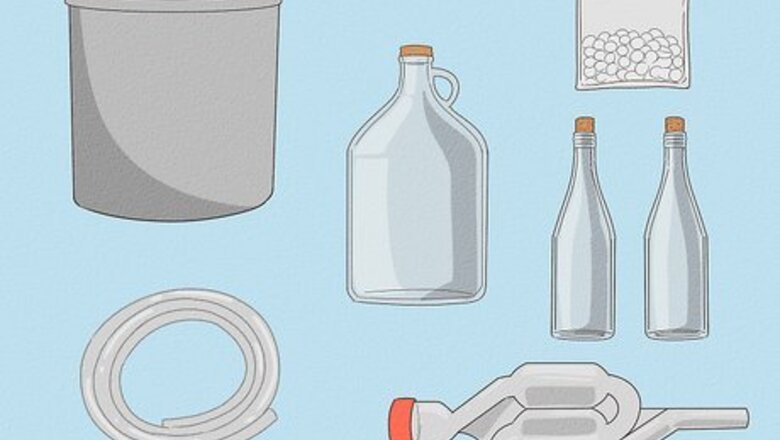
views
Preparing Supplies and Ingredients
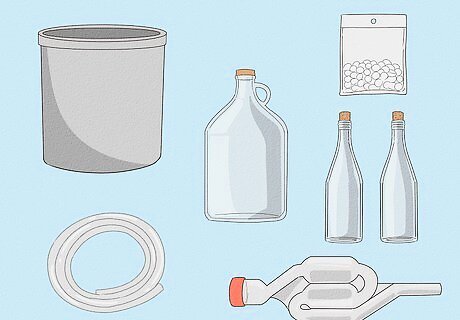
Gather supplies. In addition to the wine ingredients, you'll need a few basic supplies to ensure that your wine can age without being affected by bugs or bacteria. Home winemaking shouldn't be expensive, so it's not necessary to splurge on special equipment. You will need the following supplies: A 2 gallon (7.6 L) crock or glass jar (you can often find these at vintage or secondhand stores, however, be advised that many used crocks may have been used for sauerkraut or pickles and could contaminate your wine. A 1 gallon (3.8 L) carboy (a glass container with a small neck) An airlock A thin plastic tube to be used for siphoning Clean wine bottles with corks or screw caps Campden tablets (optional)

Pick out your fruit. Wine can be made with any type of fruit, though grapes and berries are the most popular choices. Choose fruit at the peak of its flavor. It's best to choose organic fruit that hasn't been treated with chemicals, since you don't want these to end up in your wine. If possible, use fruit you've picked yourself or buy some from a farmer's market. Some retailers also specialize in providing wine grapes to home winemakers (for example, Wine Grapes Direct), which is great if you do not live near vineyards.

Clean the fruit. Take off the stems and leaves, and make sure the fruit doesn't have particles of dirt or grit. Rinse the fruit thoroughly and place it in your crock. You can peel the fruit before crushing, but much of the flavor of the wine will come from its skin. Peeling it will result in a much milder wine. Some winemakers choose not to wash the fruit before crushing. Since fruit has natural yeasts on its skin, it's possible to make wine using only the yeast from the fruit's skin and the air. However, washing the fruit and controlling the yeast you add allows you to ensure that the flavor of the wine will be to your liking; allowing wild yeast to grow can produce foul flavors. If you're up for an experiment, you could make two batches of wine, one with controlled yeast and one with wild, to find out which you like best.
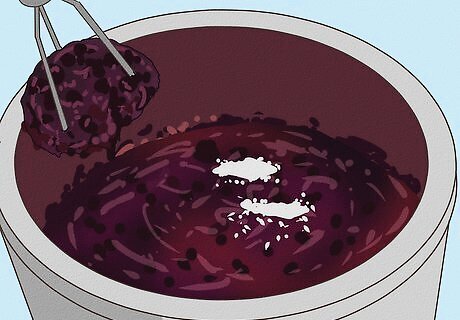
Crush the fruit. Using a clean potato masher or your hands, crush and squeeze the fruit to release its juices. Keep doing so until the level of the fruit juice is within 1 ⁄2 inches (3.8 cm) of the top of the crock. If you don't have enough fruit and juice to fill the crock almost to the top, top it off with filtered water. Add a Campden tablet, which releases sulphur dioxide into the mixture, killing wild yeast and bacteria. If you're making wild yeast wine, don't take steps to kill the yeast. As an alternative to using a tablet, you can pour 2 cups of boiling water over the fruit. Using tap water can affect the taste of your wine, since it contains additives. Be sure to use filtered or spring water.
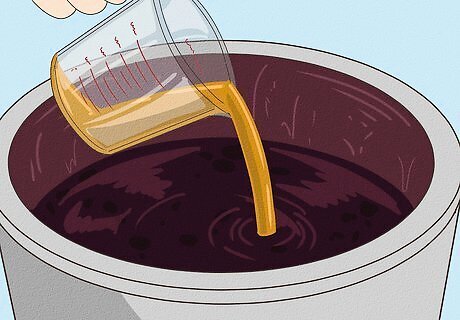
Stir in the honey. Honey provides food for the yeast and sweetens your wine. The amount of honey you use will directly affect the sweetness of your wine. If you prefer sweeter wine, add more honey. If you don't like it as sweet, limit your honey to 2 cups. Take the type of fruit you're using into account as well. Since grapes have a high sugar content, you don't need to add a lot of honey to grape wine. Berries and other fruits with lower sugar content will need a little more honey. You can add sugar or brown sugar instead of honey if you'd like. You can always add more honey later if your wine doesn't come out as sweet as you like.
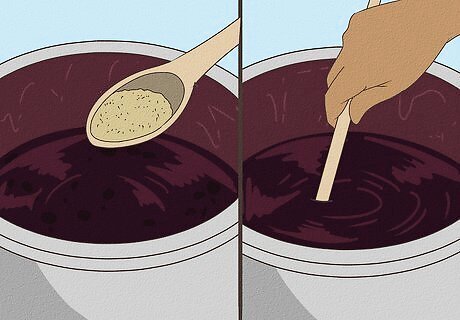
Add the yeast. If you're using your own yeast, now is the time to add it. Pour it into the crock and stir it into the mixture with a long-handled spoon. This mixture is called a must. If you're making wild yeast wine, you can skip this step.
Fermenting the Wine
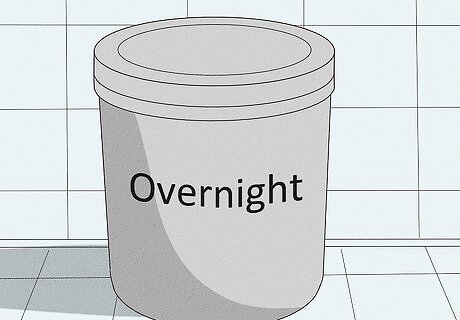
Cover the crock and store overnight. It's important to use a cover that will keep bugs out but allow air to flow in and escape the crock. You can use a crock lid designed for this purpose or stretch a cloth or t-shirt over the opening and secure it in place with a large rubber band. Place the covered crock in a warm area with a temperature around 70 degrees overnight. Putting the crock in a cool place won't facilitate the growth of the yeast. Storing it in a place that's too warm will kill the yeast. Find a good in-between place in your kitchen.

Stir the must few times per day. The day after you make the mixture, uncover it and stir it thoroughly, and recover. Do this every 4 hours or so the first day, then keep stirring a few times per day for the next 3 days. The mixture should start bubbling as the yeast moves into action. This is the fermentation process that will lead to delicious wine.
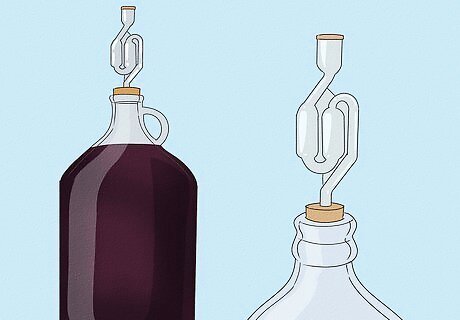
Strain and siphon the liquid. When the bubbling slows down, about 3 days after it begins, it's time to strain out the solids and siphon the liquid into your carboy for longer-term storage. Once you've siphoned it into the carboy, affix the airlock to the opening to allow for the release of gas while preventing oxygen from coming in and spoiling your wine. If you don't have an airlock, you can use a small balloon placed over the opening with about 5 pin sized holes in it. Secure it with tape. This will let the gas escape but not let in oxygen.

Let the wine age for at least one month. It's better if you can let it age for up to nine, during which time the wine will age and mellow, resulting in a much improved taste. If you used extra honey in your wine, it's better to age it on the longer side, or else it will taste too sweet when you drink it.

Bottle the wine. To prevent the wine from catching a bacteria that could cause it to turn to vinegar, add a Campden tablet to the mixture as soon as you remove the airlock. Siphon the wine into your clean bottles, filling them almost to the top, and cork them immediately. Allow the wine to further age in the bottles or enjoy it immediately. Use dark bottles to preserve the color of red wines.
Making Wine Like a Pro
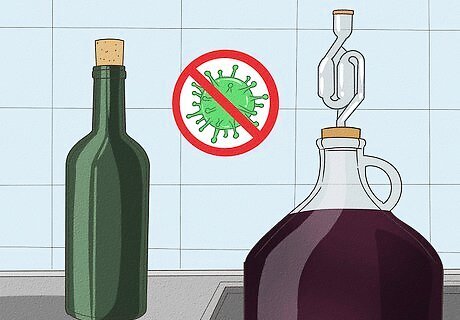
Learn the tricks that lead to successful wine-making. People have been making wine for thousands of years, and they've learned a few tricks along the way. Keep the following in mind as you make your own wine for the first time: Use very clean equipment to prevent bacteria from spoiling your wine. Keep your first ferment covered but allow for ventilation. Keep the secondary fermentation air-free. Keep all bottles full, to minimize oxygen in the bottle. Keep red wines in dark bottles so they don't lose their appearance. Make wines too dry instead of too sweet: you can add sugar later. Taste the wine at intervals to make sure the process is going well.

Know what to avoid with home wine-making. Avoiding these common pitfalls can help ensure your success. Do not: Sell your wine, since this is illegal. Let vinegar flies come in contact with your wine. Use metal vessels. Use tools or containers made out of resinous wood, as they can spoil the wine's flavor. Try to speed up fermentation by turning up the temperature. Filter without a reason or too soon. Store your wine in unsterilized jars or bottles. Bottle your wine before it has finished fermenting.




















Comments
0 comment